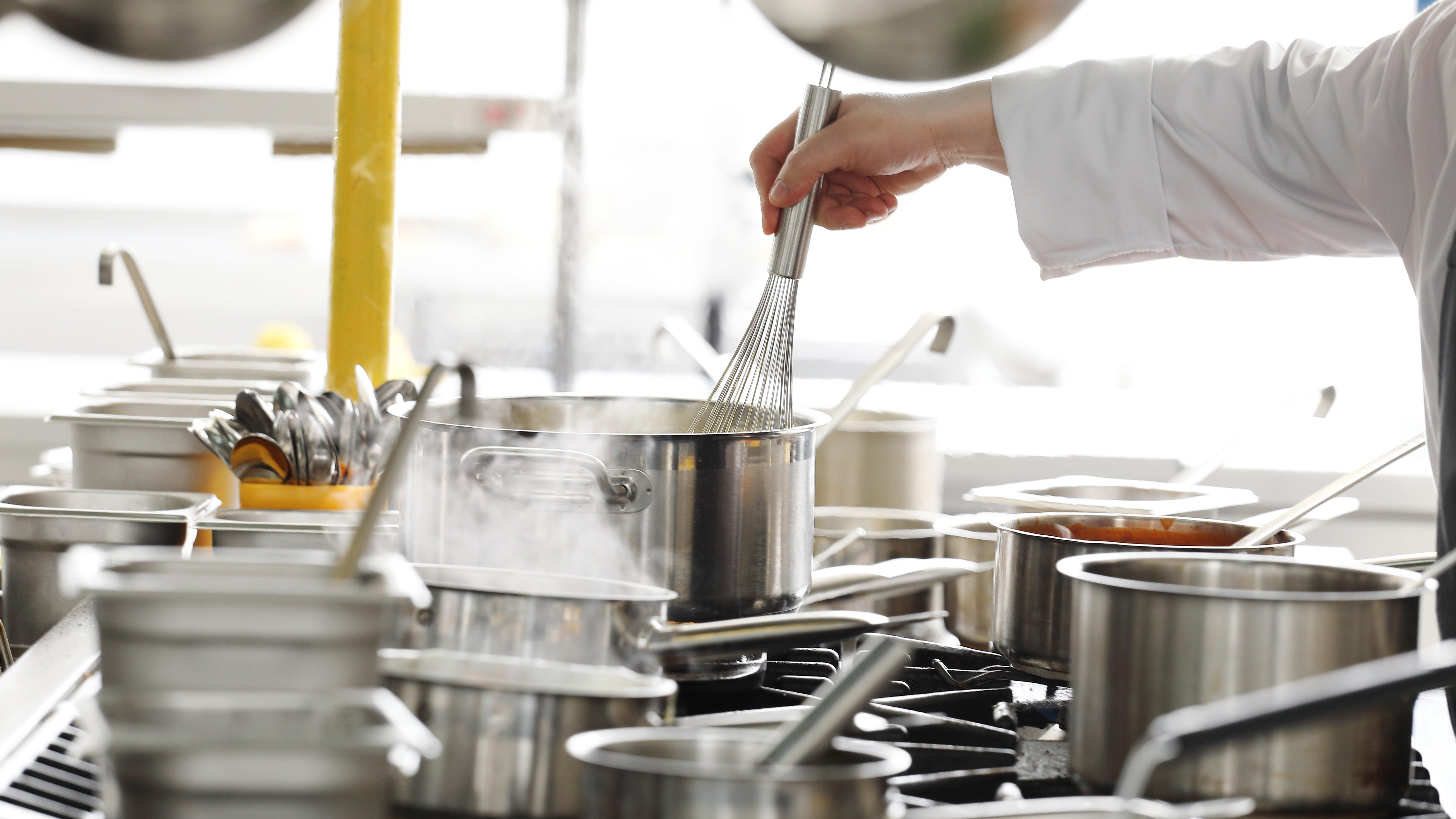The Kitchen Habits Restaurant Workers Keep Forever
If you've ever worked in the back of house, some habits come home with you.
Before becoming a food writer at The Takeout, I had a full-time gig as a restaurant cook, specifically pizza. Plenty of you reading this have had some experience working in a restaurant too. It's the type of job you can pick up for a summer, or if you're passionate about it, you can become a lifer, learning those kitchens better than anyone else can. No matter your tenure, you'll end up spending a lot of time in there, and while you're working in a restaurant kitchen, you pick up a lot of funny little habits. Here are the ones that tend to come home with us.
Shouting about where you are
One of the most important habits you pick up in a restaurant kitchen is becoming verbally communicative to a fault. If you're behind someone, it behooves you to shout "behind!" as you're passing them by so as to avoid potentially dangerous situations.
If you watch Chopped, you'll notice that contestants frequently shout "behind!" to fellow competitors when running back and forth to the pantry. It's not for show. If you don't alert someone that you're behind them, all it takes is one step backward to cause a collision.
A minor jostle is one thing, but imagine someone is holding a giant stock pot of scalding liquid. Drop that, and you've got injuries severe enough to take multiple people out of work in an instant.
So at home, if I'm cooking and my fiancée enters the kitchen for some water or something, I'll lightly inform her I'm behind her. She's worked in kitchens seasonally as well, and she still says "behind!" if she's anywhere near me. It seems silly, but it has helped us avoid some painful mistakes.
There are variations on this, too: If you're holding something very hot, or are heading to the sink with a knife, you shout "hot" or "sharp," which instructs whoever is near you to freeze up and not move a muscle.
Drinking out of a quart container
You knew I was going to invoke The Bear, right? The surprise hit TV show has been lauded by viewers for its accurate portrayal of working in restaurant kitchens, and one of the tiniest but most important details The Bear got right was that the employees are always shown drinking water out of plastic deli quart containers.
Drinking water out of a quart container in the restaurant kitchen was something I thought I came up with on my own, but I quickly realized everyone else around me was doing it too. It just makes practical sense: A plastic deli container is the safest vessel you can carry liquid around in. Can you imagine accidentally dropping a pint glass on the floor during the dinner rush? Plus, every restaurant has a surplus of deli containers to store ingredients, and they're big enough that you don't need to constantly refill them.
Quart container vets will also know the sniff test: Always sniff a clean deli before deciding to drink from it. If something particularly pungent was recently stored in there, like minced garlic, you don't want to drink out of a stinky container, because you'll definitely taste those remnants in your water.
These humble plastic cups let you keep track of just how much water (or Monster energy drink) you've consumed during your shift, too. Being on the line is extraordinarily dehydrating, so making sure you've put down at least a quart is a good benchmark to aim for.
I eventually broke this habit at home; drinking out of a quart container feels out of place when you have a cupboard full of familiar cups and mugs. But for a long while, I'd absentmindedly reach for a quart container whenever I was thirsty. I have chef friends who admit to exclusively drinking out of quart containers at home.
Labeling your ingredients
As soon as you transfer anything into a storage container in a restaurant kitchen, it's customary to slap masking tape on its exterior, clearly label its contents with a Sharpie, and mark the date on which you filled it.
This is done so cooks know which ingredients to reach for first. There's a rule we call FIFO (fee-fo), which stands for "First In, First Out." No matter what, you should cook with the oldest ingredient first to ensure anything perishable is maximally used before it goes bad. (Of course, this is usually best practice in our home kitchens, too.)
Since I'm the only one who cooks in my household, I generally know when I purchased something. At least I think I do. Still, stuff has gone bad in my fridge more often than I'd like to admit. A system of dedicated labeling and FIFO ingredient usage helps minimize waste and keep everything organized.
If you've worked in a restaurant kitchen (or currently do), are there any habits you've brought home unexpectedly? Let us know in the comments section. I have a feeling there are some fun ones that get highly specific.
